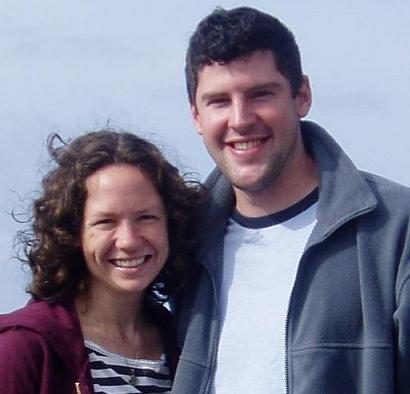Always eager to explore our adopted home, Lauren and I took a train trip down to
London last weekend to visit
Greenwich (pictures).
Greenwich is on the
Thames River just southeast of the main city, and is know for three things: seafaring, astronomy, and time.
The two main attractions in this really nice part of the city are the Royal Observatory at
Greenwich (home of the Prime Meridian separating the East and West Hemispheres) and the national
Maritime Museum.
We spent most of the day at the Royal Observatory which was a really fascinating place. Our guide was especially good and told the story behind the race to find an effective way of measuring longitude…
In the 18th century ship navigators had a real problem in that they couldn’t tell reliably how far east or west they were while at sea. Latitude (N-S) was easy since you can see how high the sun gets above the horizon at sea and calculate how far you are from the equator, but east-west is much harder. In the early 1700's there was a horrible accident where English ships crashed in the shallows off of Land’s End because of an error in Longitude and 1200 died. The King put out a prize of 20,000 pounds to the first person to give a reliable way to measure longitude. A self-trained clock maker in England (from York in the North) came down with a clock he invented that used springs instead of a pendulum to tell time at sea accurately. After decades of trials and new models, he was finally able to convince the King that his clock was accurate enough and it became the first chronometer.
Using this clock you could always have the exact time at Greenwich "with you" in the ship, then use the sun to find when it was noon wherever in the world you were. Some simple math with the time difference gave you your latitude quite precisely, as long as your clock was precise and you knew your fixed comparison point. As simple as it sounds, this method was revolutionary since you didn’t have to sight the stars or sun to estimate your position, all it took was reading a clock. So that all the ships in port in London had the exact correct time, there is a ball that has dropped at the top of the Royal Observatory at precisely 1pm since 1833 so that all the ships in harbor could set their clocks. One of the ships was even designated to be "on the ball" and fire a small cannon at that instant, so that ships that couldn't see the ball, didn't miss the time. Our guide had a great time telling us all this and was really good.
It was neat to get a sense for the navel tradition of Britain and its links with astronomy and time, as this work with determining longitude accurately allowed ships to sail more boldly around the world. These connections are very strong at Greenwich, and I came away really struck by what an inventive, courageous, and inquisitive time this age of English seafaring was.
Yo-ho-ho-ho a sailor’s life for me.

